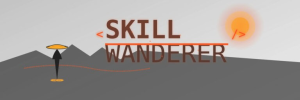Welcome back. In our last session, we ended with a big question: We've seen how this incredibly powerful hardware was built, but how do we actually tell it what to do?
The answer brings us to the next great leap in our journey, where computing is taken to the next level. The focus shifts from building the physical machine to the art of commanding it. We are going to talk about software.
If hardware is the body, then software is the consciousness that brings it to life.
In this section, we'll explore some of the early, foundational concepts that allow us to communicate our intentions to these powerful machines. To make this part of the course more practical, I have also included some small assignments after a few critical concepts we'll cover.
Now, I want to be very clear about this. The world of software is incredibly deep, and these assignments are just a scratch of the surface. They are by no means meant to be comprehensive. So as you go through this section, please take your time and explore. If you encounter something that seems too complicated, I want you to remember the philosophy of this course: we are here for the big picture.
Don't worry if you don't get every single detail. For now, just knowing the name of the concept is enough. We are building a map of the territory; you will always have a chance to dive deeper in a later course.
You have mastered the physical foundations. Now, it's time to learn how to command them. Let's get started.
